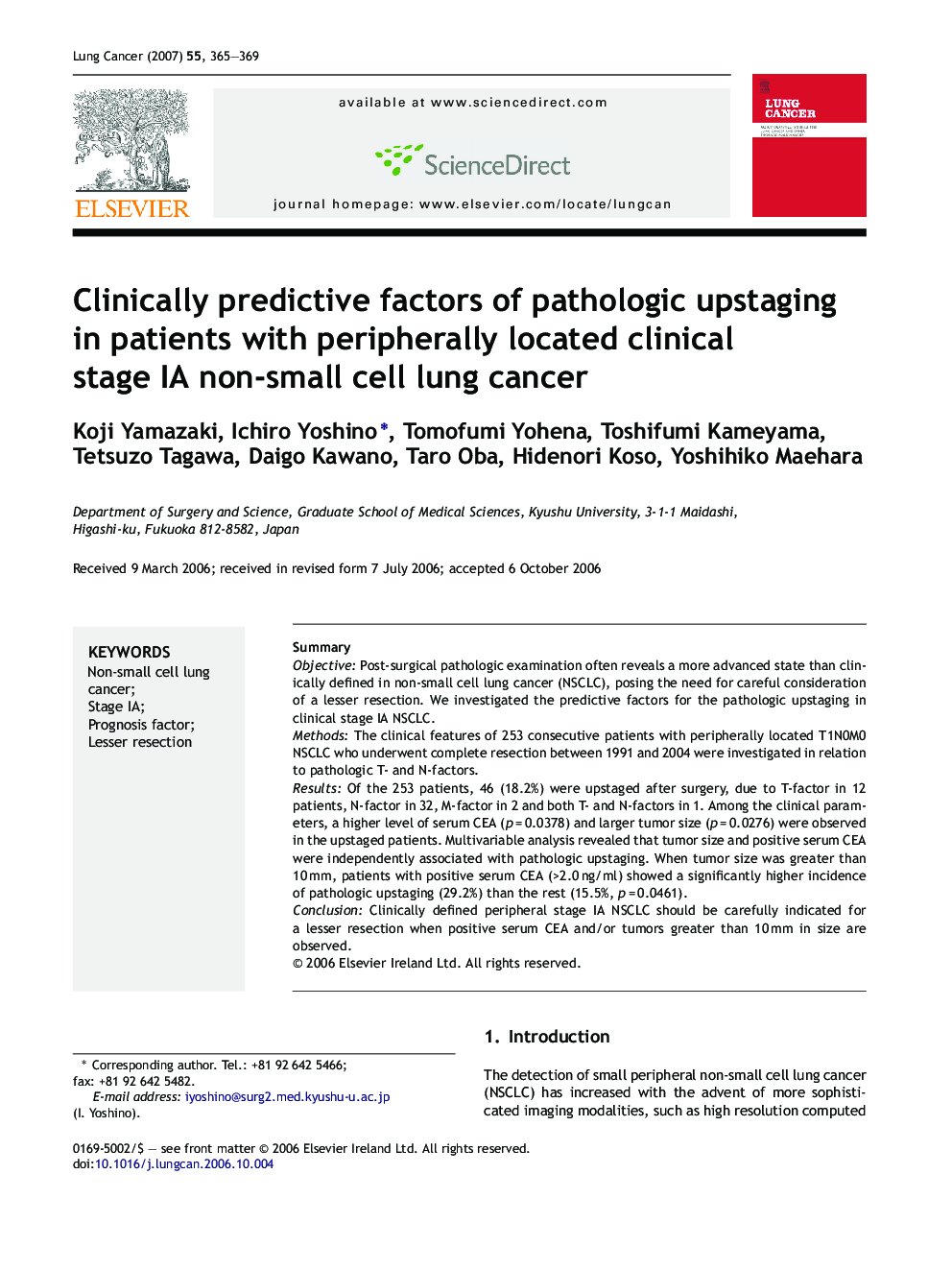| Article ID | Journal | Published Year | Pages | File Type |
|---|---|---|---|---|
| 2143940 | Lung Cancer | 2007 | 5 Pages |
SummaryObjectivePost-surgical pathologic examination often reveals a more advanced state than clinically defined in non-small cell lung cancer (NSCLC), posing the need for careful consideration of a lesser resection. We investigated the predictive factors for the pathologic upstaging in clinical stage IA NSCLC.MethodsThe clinical features of 253 consecutive patients with peripherally located T1N0M0 NSCLC who underwent complete resection between 1991 and 2004 were investigated in relation to pathologic T- and N-factors.ResultsOf the 253 patients, 46 (18.2%) were upstaged after surgery, due to T-factor in 12 patients, N-factor in 32, M-factor in 2 and both T- and N-factors in 1. Among the clinical parameters, a higher level of serum CEA (p = 0.0378) and larger tumor size (p = 0.0276) were observed in the upstaged patients. Multivariable analysis revealed that tumor size and positive serum CEA were independently associated with pathologic upstaging. When tumor size was greater than 10 mm, patients with positive serum CEA (>2.0 ng/ml) showed a significantly higher incidence of pathologic upstaging (29.2%) than the rest (15.5%, p = 0.0461).ConclusionClinically defined peripheral stage IA NSCLC should be carefully indicated for a lesser resection when positive serum CEA and/or tumors greater than 10 mm in size are observed.
